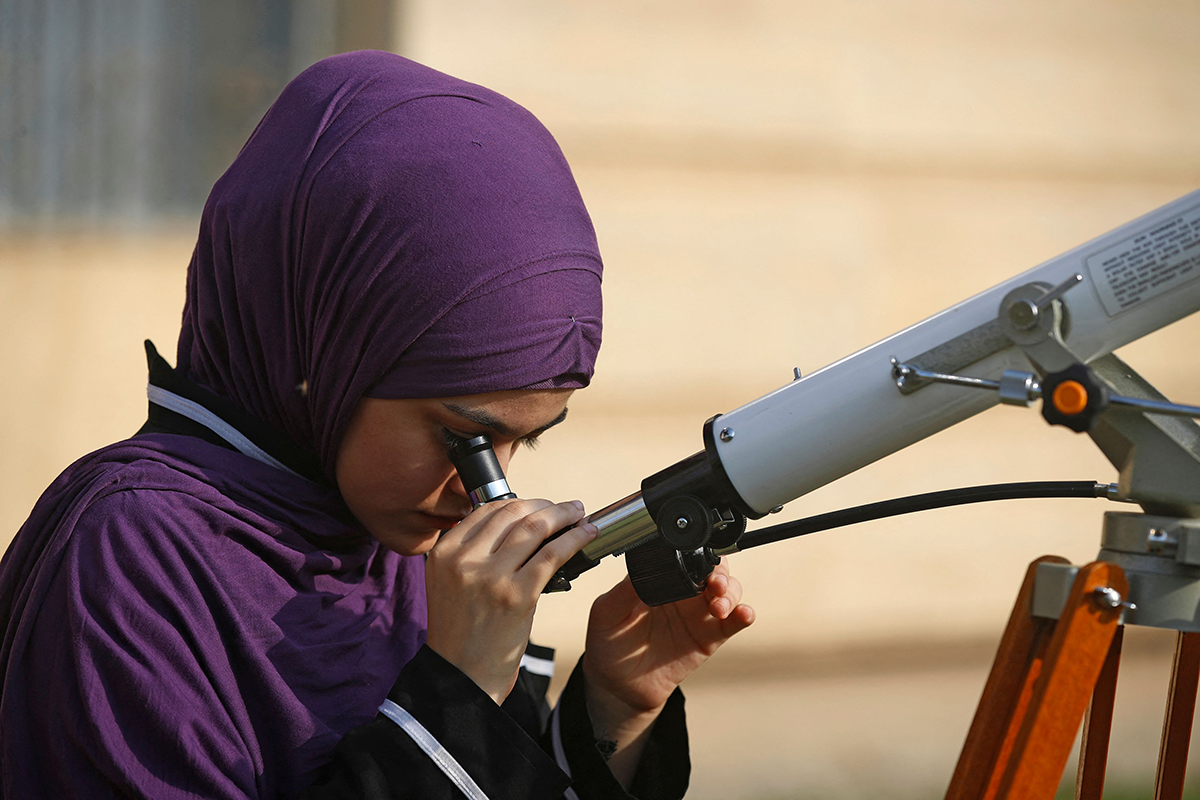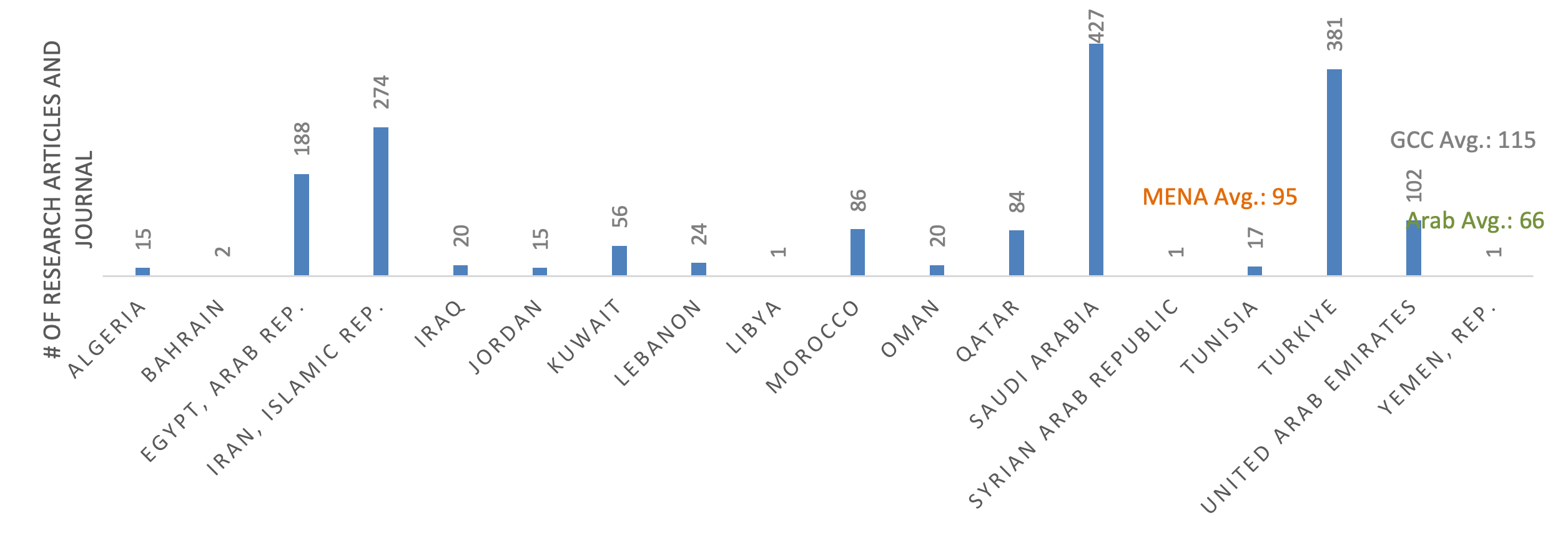

On March 3, 2023, Kuwait Life Sciences Company published the second edition of the Middle East Science Report (MESR). Written in both Arabic and English, the first MESR was published in the summer of 2017 and was aimed at helping to put the Middle East and North Africa science, technology, and innovation (STI) sector on a path back towards its historical zenith. The report covers research from 57 MENA institutions that have funded, supported, and published close to 1,500 significant scientific papers and registered over 30,000 unique patents. Detailed interviews were also conducted with 20 of the region’s top scientific minds.
Today, there are around 300 universities in MENA, with an average of 17 universities per country offering programs in science. However, not much has changed since the first MESR was published in July 2017. The MENA region still lags both international best practices and closer regional examples. The Middle East still boasts only two Nobel Science Prizes, out of a total of 343 awarded.
Today, the MENA region is a net importer of STI products and services and a net exporter of STI talent; scientists and technology innovators prefer to matriculate into Western universities or establish early-stage ventures in Western markets that enjoy a more structured entrepreneurial environment and greater access to capital. This was not always the case, as the Middle East has a rich history in science and used to be a net exporter of innovation and a net importer of STI talent. My favorite story about the ancient Arab House of Wisdom (Bayt Al Hikma), built during the lifetime of the Caliph Haroun al-Rasheed in the late eighth century CE in Baghdad — mankind’s first millennium capital of human culture and scientific endeavor — was how the caliph himself rewarded authors and translators from every corner of the world with the weight of their books in gold. Mind you, these were usually very heavy, leatherbound, books.
The establishment of the House of Wisdom as one of history’s first centers of scientific excellence helped usher in the Islamic Golden Age. From the 8th century to the 15th century CE, Islamic, Arab, and Middle Eastern scientists and polymaths (including both Persian and Turkish scholars) propelled to new heights the fields of astronomy, algebra and mathematics, cartography and geography, alchemy and chemistry, anatomy and medicine, zoology and ethology (animal behavior). For close to 800 years, scientific legends including Hunayn ibn Ishaq (Johannitius), Al Razzi (Rhazeus), Al Zahrawi (Abulcasis), Ibn Sina (Avicenna), Ibn Zuhr (Avenzoar), and Ibn Rushd (Averroes), to name just a few, worked openly as part of a scientific community, educating both Middle Eastern and Western nations in their chosen fields. It was a cross-regional exchange of culture, ideas, and scientific enlightenment. Indeed, Ibn Sina’s groundbreaking book, Al-Qanoon Fil Tibb ("The Canon of Avicenna"), published in the late 10th century CE, would go on to be the standard textbook of medicine for the next 700 years. Another important book, Al Muqaddimah (“The Prolegomena”), by 'Abd al-Rahman Ibn Muhammad Ibn Khaldun al-Hadrami of Tunis, commonly known as Ibn Khaldun, laid the foundations of several different fields of knowledge, in particular the science of civilization (Al-'Umran) with significant contributions to economics, including production, supply and demand, cost and consumption, and utility, providing notable inspiration to Adam Smith, whose great works were published some 370 years after Ibn Khaldun’s death.
But the situation in the region today is far different. According to the most recent Nature Index, the MENA average ranking for “Innovation” is 73 out of 100 countries (see below table). The U.S. is the world’s second-highest-ranked nation, followed by Israel (3rd). Qatar (21st) is the highest ranked Arab country while most others rank in the bottom half or even the bottom third of the world rankings.
|
Country |
Ranking |
Country |
Ranking |
|
Qatar |
21 |
Oman |
76 |
|
UAE |
25 |
Morocco |
94 |
|
Saudi Arabia |
40 |
Tunisia |
99 |
|
Bahrain |
45 |
Kuwait |
103 |
|
Jordan |
56 |
Algeria |
104 |
|
Lebanon |
58 |
Egypt |
109 |
|
Iran |
66 |
Yemen |
134 |
|
Turkey |
69 |
Iraq |
N/A |
Source: Nature Index (2022), N/A - Data Not Available
|
Country |
Ranking |
|
United States |
2 |
|
Israel |
3 |
|
United Kingdom |
12 |
Source: Nature Index (2022)
According to the Nature Index, the total number of top-tier journal publications among all Arab countries is 1,059, which is 20% less than the total published by Israel alone (1,315). The average article publication rate per country for MENA is 95 (see below charts), with Saudi Arabia (427), Turkey (381), and Iran (274) publishing the most articles in the region.

 Source: Nature Index-2022
Source: Nature Index-2022

Source: Nature Index-2022
In light of growing global economic uncertainty, Middle Eastern countries will have to work to stimulate STI and the education sector to mitigate economic risk factors, including population health, food, clean (fresh) water, energy security, and climate change. MENA countries can also learn from the remarkable socioeconomic progress of countries such as Japan, Brazil, China, Korea, and Malaysia, due in part to the development of STI-related sectors.
But brighter days for MENA science are surely ahead. Important developments include the multibillion-dollar endowments of many Saudi universities, including one of the world’s richest, King Abdullah University of Science and Technology ($20 billion), as well as King Saud University ($2.7 billion) and King Abdul Aziz University ($1 billion). Unfortunately, these are still the only three institutions in the region that publicly announce the size of their endowments. Indeed, more transparency is required across the region, not just in terms of the size of economic investments into science, research, and education, but also, more importantly, on the outcomes of these investments. Indeed, a wide range of recent positive MENA initiatives hitch STI to socio-economic development, most often in the field of energy. Examples include the revival of the Zewail City of Science and Technology project in Egypt, Masdar in Abu Dhabi, the Kuwait Foundation for the Advancement of Sciences (KFAS), and the establishment of the Emirates Institution for Advanced Science and Technology (EIAST) to operate Earth observation satellites — each acting as their own bright star in their respective country, many with regional aspirations.
The current link between MENA universities and the regional industry is weak to non-existent when compared to international best practices. This problem is further exacerbated by populations focused on consumerism and the feeble academic research requirements at many universities and STI-related institutions. The symbiotic relationship between academia and industry has profound implications for the scientific status quo of a country. It can be a potent tool for building institutional research capacity, in addition to forming the central pillars of a national strategy that empowers the transfer of knowledge and technology from universities to corporations. This, in turn, can help to boost innovation and the competitiveness of both companies and the nations where they are based, as well as (eventually) the entire economic system itself.
To foster a true knowledge economy, MENA nations must focus on nurturing special higher education programs that provide critical scientific skills training and improved STI teaching standards, which will then prepare the graduates of tomorrow for innovative careers in scientific research and technology development. Thankfully, both Qatar and Saudi Arabia have seen phenomenal growth in the volume of scientific publications over the past decade. Saudi Arabia now counts two of its universities amongst the world’s top 500. Many other countries in the MENA region have made grandiose plans to reduce their dependence on foreign workers by developing technical and vocational education with equal opportunities across a growing gender gap.
So, what is so important about science and technology?
Looking back through history, our world has experienced four industrial revolutions: the first saw the mechanization of production using water/steam power, the second was about mass production/assembly lines, and the third enabled automation through computers and information technology. Today’s fourth industrial revolution is bringing on the digital age through the convergence of the physical, virtual/digital, and biological worlds. While each industrial revolution brought bigger and better advances, they all have one thing in common — they all enabled economic growth by increasing productivity and efficiency, driving inclusion and reducing poverty, improving quality of life and access to education and health care, and creating high-skill jobs and raising global income levels. In doing so, advances in science and technology have repeatedly transformed all aspects of business, society, and human life.
An STI strategy for the MENA region must focus on improving science education in universities, enhancing scientific research capacity, increasing financial support for research and development (R&D), and fostering regional and international scientific and educational cooperation. A network of science centers of excellence needs to be set up in the MENA countries to promote interactive approaches, excellence, and innovation. This network would use selected outstanding technological institutions and research centers associated with universities in MENA as regional hubs to facilitate cooperation through joint research projects, and to promote high-level training. In tandem, MENA countries must increase their financial support for R&D from the present 0.3% of GDP to 3%, with the private sector contributing 30% to 40%. Creating a pan-MENA fund for science and technology development could help make this possible, supported by new financial mechanisms such as taxes and customs.
A MENA STI strategy must focus on national and pan-Arab higher education and research initiatives in 13 priority areas, including: biotechnology, life sciences, nanotechnology, information technology, clean water, food, agriculture technology and fisheries, space, energy, desert sciences, the environment, and renewable energy. There also needs to be greater mobility for scientists within the region and cooperation with international STI and higher education organizations.
Perhaps one of the greatest lasting legacies of our Middle Eastern scientific forefathers is that there are 165 stars and various star systems named in Arabic — from the expansive as-Saḥābat uş-Şaghirah or "small cloud," also known today as the Andromeda Galaxy, which was first catalogued by Al-Sufi in his Book of Fixed Stars, to the giant Bint ul-Jawzā', better known today as Betelgeuse, the brightest star in our night sky. Young MENA minds need only look up at the night sky to find continued inspiration from our region’s tremendous contributions to science.
Dr. Mussaad M. Al-Razouki is the Chief Business Development Officer of Kuwait Life Sciences Company in Kuwait City, Kuwait.
Photo by AHMAD AL-RUBAYE/AFP via Getty Images











